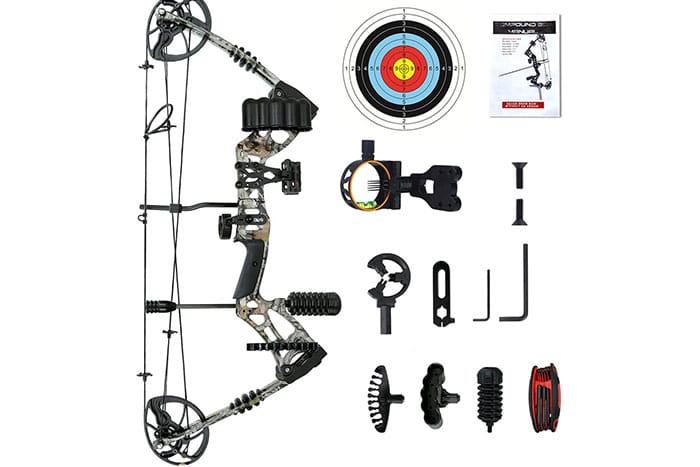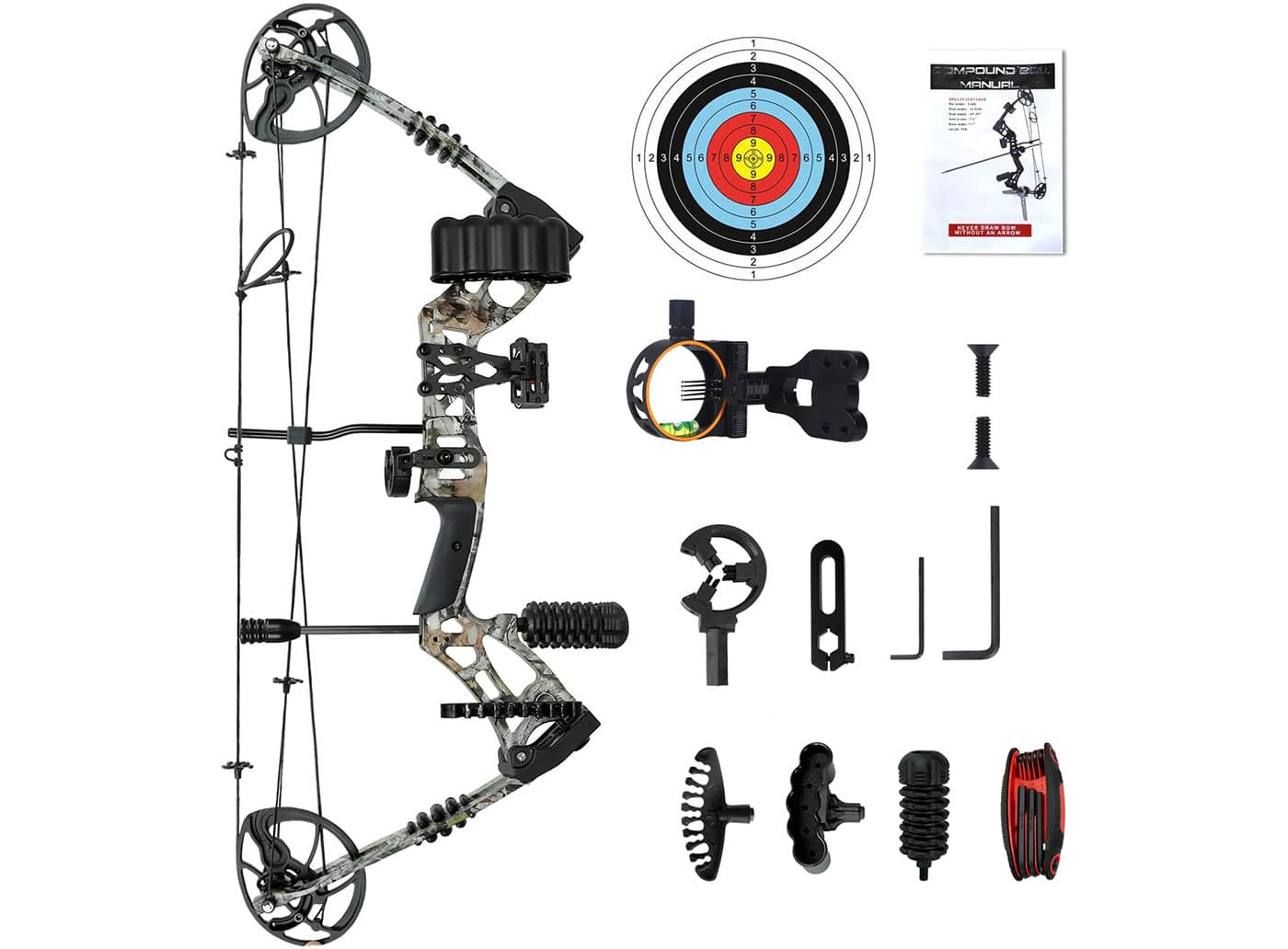One of the most popular bows among archers is the compound bow. Compound bows, along with recurve bows and longbows, are the most used. They are ideal for hunting and target practice due to their effectiveness, appearance, and flexibility. There is even an Olympic sport based on the usage of these compound bows.
Table of Contents
The history of the compound bow
Holless Wilbur Allen invented the first compound bow, as we know it today, in 1966. In 1969, he copyrighted the bow due to its dominance and growing popularity. However, the compound bow's story does not begin there. Similar bows were in use prior to the invention of the compound bow. In the early twentieth century, these bows were referred to as "composite bows."
A composite bow is one that is built from a combination of wood, horn, and sinew. The bow's shape and stability are provided by the hardwood core, which is bent by the string. When the composite bow is drawn, the sinew on the outside is stretched, while the horn on the inside is compressed. Men used composite bows to hunt animals to put food on the table back in the day. Their bows were constructed from whatever materials were available on the ground.
The construction of the compound bow
The name composite bow is no longer in use, and compound bows are the proper term for these bows. A compound bow is one that uses a lever mechanism to function. It's usually made from cables and pulleys that bend the limbs. The archer has a mechanical advantage thanks to the pulley/cam mechanism.
The limbs of a compound bow are much stiffer than those of a longbow or recurve bow, which makes the compound bow more energy efficient. The compound bows stiffness to changes in temperature and humidity is reduced by the higher stiffness construction and modern technology, which improves precision.
The pulley/cam mechanism provides a benefit known as "let-off." Both cams rotate when the archer pulls back the string. The cams are designed to be more eccentric than round, resulting in a larger effective radius as they rotate. Most compound bows have a 70 to 85 percent let-off at maximum draw. This percentage puts the maximum energy into a shot while also improving its precision. However, since every archer is unique and has their own favored style, the ideal let-off percentage can be manually adjusted with most compound bows.
Technical advantages of the compound bow
A cam mechanism is used in compound bows to maximize energy storage throughout the draw cycle. The draw weight of a compound bow is less challenging than that of a typical recurve bow, which has a highly linear draw weight curve. With a recurve bow, more effort is required, and less energy is stored in the shot. As a result, a compound bow's pulley/cam system has numerous advantages over traditional recurve bows.
Compound bows' holding weight is better to that of recurve bows and longbows. This is due to the fact that the ideal let-off percentage is between 70 and 85 percent, rather than full drawn. When hunting or practicing target shooting, less energy is required to draw the string, allowing for a more precise shot.
The arrow's acceleration is directly controlled by the cams' design. The arrow will accelerate more slowly with a "soft cam" than with a "harder" cam. Beginner archers will usually use a soft cam, whilst more experienced archers will use a harder cam to enhance speed. Compound bows can be manufactured with a wide range of cams, ranging from soft to hard.
The cables pull the limbs in toward each other when a compound bow is drawn, unlike a longbow or recurve, where the limbs flex in the direction of the bow string. Because of this difference, newer compounds can have limbs that are more horizontal than angled. Because the forces going upward at the top limb and downward at the bottom limb cancel one other out, the horizontal, or "parallel" limb structure lessens the recoil and vibration felt by the shooter when the arrow is released.
Technical disadvantages of the compound bow
Compound bows feature more moving components than longbows and recurve bows, which might result in more maintenance or even a defective part of the bow. Furthermore, since greater energy is stored in each shot with a compound bow, dry shooting poses a significant risk of destroying the bow. Finally, compound bows are typically heavier than other bows, owing to the increased set of items on the bow.
What to consider when purchasing a compound bow
Compound bows are suitable for everyone, whether you are a beginner, an expert, a woman, or a child: a compound bow is always a good choice. Compound bows are widely available on the market. That's why knowing what to look for is essential. The first consideration is the reason for the purchase. Is the bow going to be used for target practice, hunting, or both? If it’s for hunting, a more flexible compound bow is preferred.
Second, the AtA (axle-to-axle) distance is important. The axle-to-axle range refers to the compound bow's entire range from top to bottom. The best compound bows for youth are usually those with a smaller AtA range.
The third consideration is the drawback's weight and length. This refers to the strength required to draw back the compound bow's string. Most compound bows have a perfect let-off percentage of 70 to 85 percent, as previously stated. The more the string is pulled back, the more strength is required. The best compound bows for women, in most cases, are those with a lighter draw-back weight.
Summary
Holless Wilbur Allen designed the compound bow in 1966, and it was patented in Missouri in 1969. It has a pulley/cam that stores more energy when the arrow is shot, with a 70 to 85 percent let-off percentage being ideal.



